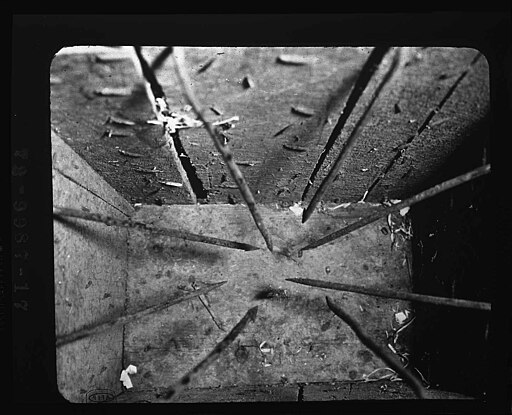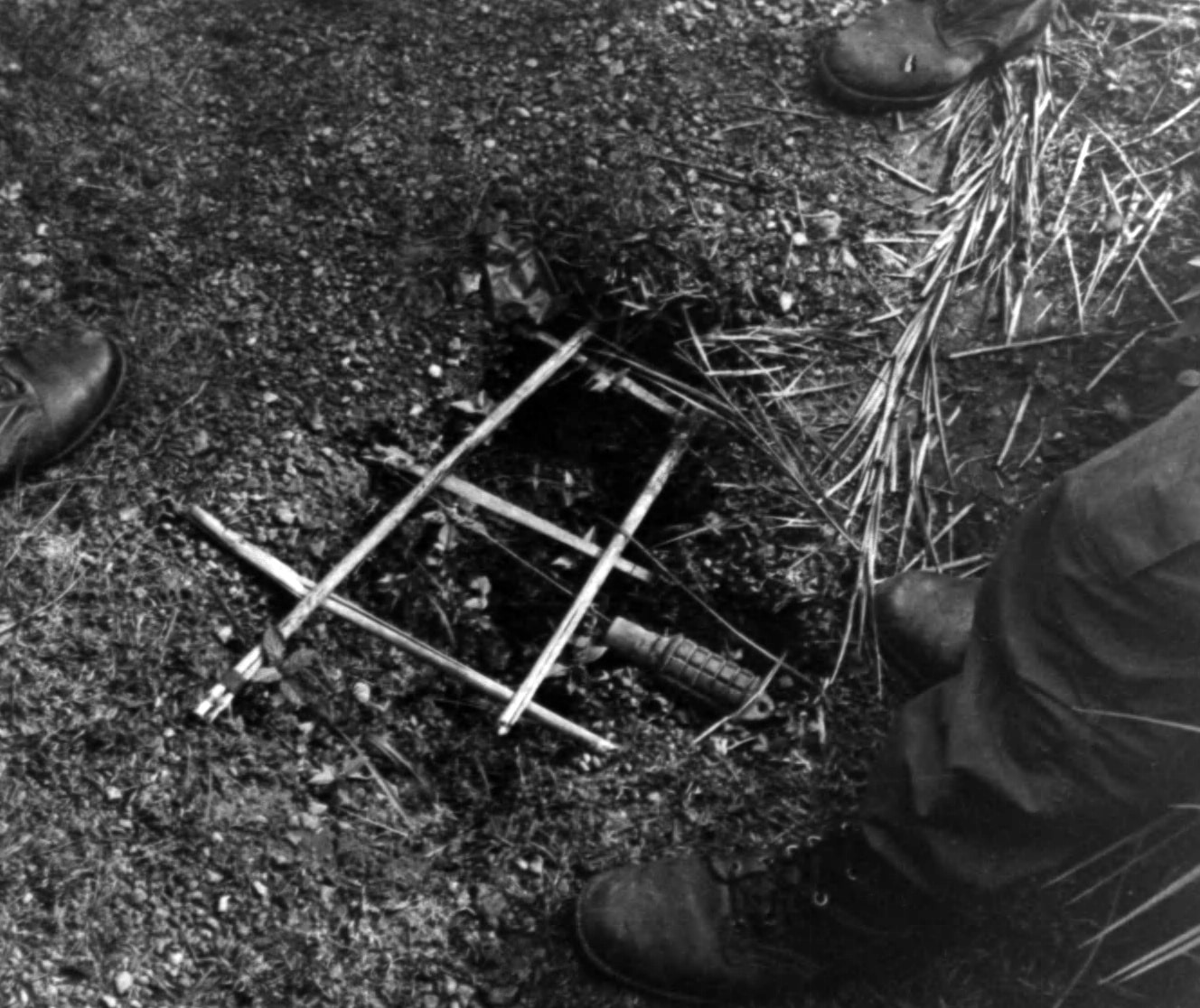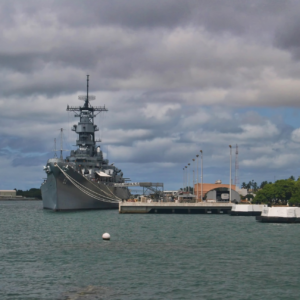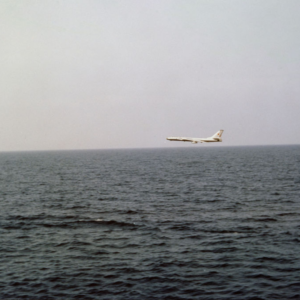On June 20, 1970, the men of a reconnaissance platoon from the 198th Infantry Brigade, Americal Division of the U.S. Army, were on a night patrol in Quang Ngai Province, South Vietnam, searching for signs of Communist forces. As the platoon silently worked their way along their designated route, Specialist 4 William Bonner triggered a booby trap. The trap, a 105-millimeter howitzer round rigged to explode, detonated with enormous force. It killed Bonner instantly and mortally wounded four others in the platoon.

Communist-made improvised mines, weapons, and explosive devices became infamous during the Vietnam War. Known by Americans as “booby traps,” they came in almost infinite varieties, from crude to remarkably sophisticated. There were two main types of booby traps: antipersonnel traps, designed to kill or maim allied service people on foot, and antivehicle types for damaging jeeps, armored vehicles, and tanks. Antipersonnel booby traps ranged from sharpened “punji” stakes, venomous snakes, and scorpions buried in camouflaged holes, to Communist and American mines and artillery rounds, and even coconuts packed with explosives. Viet Cong and North Vietnamese Army troops ultimately became gruesomely creative and proficient with the materials they had to hand. Some traps were nothing more than an empty artillery shell packed with pieces of metal and gunpowder, attached to a simple trip wire. In what were known as cartridge traps, Communist forces even buried individual rifle and artillery rounds pointing upward and placed lightly on top of a firing pin. When a passing soldier stepped on the wrong spot, the round would fire upward into the man’s foot or body.

Booby traps were usually concentrated in specific areas. Viet Cong and North Vietnamese troops clustered them in likely helicopter landing zones, narrow pathways through mountains and forests, trail junctions, tree lines, and rice paddy dikes (where U.S. troops and South Vietnamese civilians walked when crossing flooded rice fields). Some of the most horrifying booby traps were those placed under the dead. Sometimes, GIs would rifle the pockets a fallen enemy’s dead body looking for intelligence or souvenirs. When a GI turned the body over, a grenade would explode in his face.

The booby trap that exploded amid Reconnaissance platoon, Company E, 1st Battalion, 52d Infantry Regiment, 198th Infantry Brigade, Americal Division on June 20, 1970, was much worse than a grenade. It consisted of a U.S. 105-millimeter howitzer round rigged to fire and explode when tripped. When it did so, it ripped through most of the recon platoon. William Robert Bonner was killed instantly. Twenty years old from Los Angeles, California, Bonner had been the point man at that moment. Several others were wounded—four of them, severely so: Sergeant Jerry Guy Giberson, 21 from Donnellson, Iowa; Corporal Johnny Lee Moore, 25 from Madison, Florida; Specialist 4 Robert Lee Porter, 21 from Gordon, Georgia; and Specialist 4 Billy Ray Sargent, 20 from Williamsburg, Kentucky. Amazingly, a medevac helicopter managed to get all four men to a medical facility. During the Vietnam War, if a wounded service person made it to medical attention, they had over a 95 percent chance of survival. In this case, however, the howitzer round had caused too much damage. Three of the four men died within minutes or hours of reaching the hospital. The fourth man, Johnny Lee More, survived until July 2, 1970, when he died from his wounds. All five men are memorialized together on Panel 9W, Lines 72–75 and 112 of the Vietnam Veterans Memorial Wall in Washington, D.C. Porter, Sargent, and Giberson each earned two Bronze Stars—one each for merit and one each for valor.1
News
How Hezbollah & Israel counter-attack after the Lebanon Explosion
How Hezbollah & Israel counter-attack after the Lebanon Explosion This is how Hezbollah responded to Israel after the sophisticated pager and walkie-talkie explosions, which occurred across Lebanon. They retaliated by launching guided missiles for the first time. The three strikes…
[MUST WATCH] In pictures: The deadliest day in Lebanon in nearly a year of conflict
In pictures: Israel strikes hundreds of Hezbollah targets in Lebanon Israel attacked hundreds of Hezbollah targets on Monday in airstrikes, making it the deadliest day in Lebanon in nearly a year of conflict. Smoke billows over southern Lebanon following Israeli…
BREAKING NEWS: US sends more troops to Middle East as violence rises between Israel and Hezbollah
US sends more troops to Middle East as violence rises between Israel and Hezbollah Violence between Israel and Hezbollah is raising risk of a greater regional war. WASHINGTON — The U.S. is sending a small number of additional troops to the…
Easy Company Facts Even Hardcore Fans of ‘Band of Brothers’ Don’t Know
Photo Credit: HBO / Getty Images HBO’s 2001 miniseries, Band of Brothers, has continued to gain popularity in the decades since its release. This is partly due to later generations having greater access to the series – in particular, via…
Mighty MO – USS Missouri (BB-63) Video and Photos
There are three other ships in the United States Navy which were named after the state of Missouri besides the battleship USS Missouri (BB 63), and although she became associated with the history of the Japanese raid at Pearl Harbor, she…
A Soviet TU-16 medium jet bomber flies past the anti-submarine warfare support aircraft carrier USS Essex
That Time A Soviet Tu-16 Badger Crashed Into The Sea After Buzzing A U.S. Aircraft Carrier A screenshot from the video filmed aboard USS Essex shows the Tu-16 Badger flying very low close to the aircraft carrier. Low pass with…
End of content
No more pages to load











